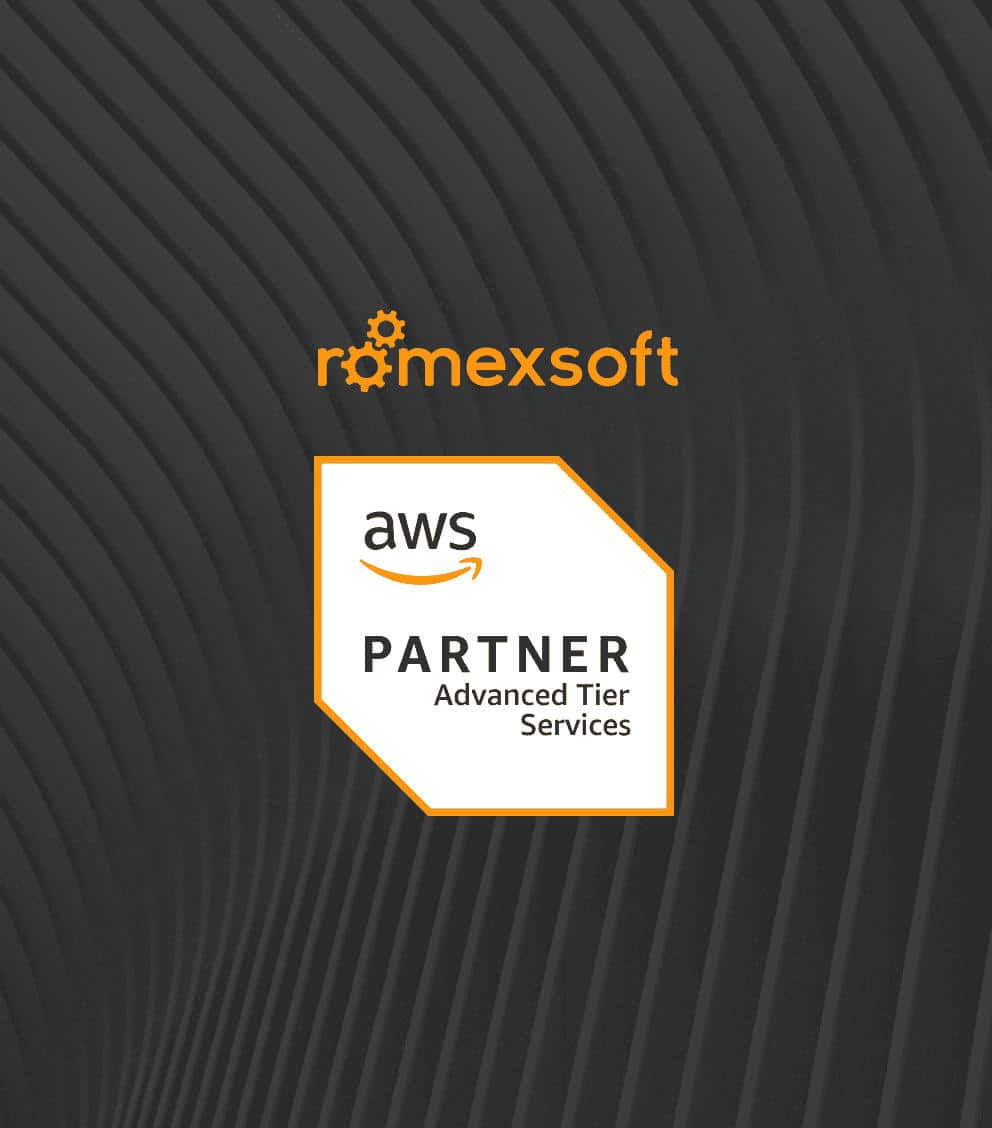HL7 Integration Guide to Standards Implementation and Use Cases
Taking into account the sensitive nature of the healthcare field, achieving seamless health data exchange remains a major challenge. The article explores the role that HL7 integration plays in overcoming interoperability issues. Establishing standardized communication between systems like EHRs, LIS, and PACS, – add up to patient care, compliance, and efficiency on the line.
Read on to discover HL7 standards (including V2, V3, CDA, and FHIR) as well as some practical implementation guidance, use cases, and expert tips tailored for healthcare IT leaders and developers.
The blog discusses:
- the definition of HL7 and its benefits
- what are key components of the messages
- types of data in HL7 format
- how to integrate HL7 and possible challenges

Table of Contents
HL7 standards serve as a crucial foundation for healthcare interoperability, and establish a common format for diverse medical systems to share data.This standardized communication, facilitated by HL7, ensures seamless data exchange, and promotes improved operational efficiency and adherence to regulatory compliance. Ultimately, the implementation of HL7 standards enhances patient care by enabling timely access to accurate information across various healthcare platforms.
Table of Contents
What is HL7 in Healthcare
HL7 stands for Health Level Seven International, an organization that establishes standards for framework development, as well as for the exchange, integration, sharing, and retrieval of electronic health data. The purpose of the standards designed by this organization is to provide guidelines for clinical practice and the management, delivery, and evaluation of health services.
In a broader sense, the term is often used when talking about the various healthcare interoperability standards an organization devises, such as the standards that regulate transferring and sharing data between different healthcare providers and their software apps.
HL7 Standard Types
There are several key standards developed by HL7, namely:
- Version 2.x Messaging Standard
This criterion is a data exchange specification designed for health and medical transactions. - Version 3 Messaging Standard
This is yet another interoperability specification used for health and medical transactions. - Clinical Document Architecture (CDA)
This standard is an exchange model utilized when working with clinical documents, based on the previously introduced HL7 Version 3. - Continuity of Care Document (CCD)
This one is a US specification applied to the exchange of medical summaries, based on CDA. - Structured Product Labeling (SPL)
As an HL7 Version 3-based standard, it concerns published medication information. - Clinical Context Object Workgroup (CCOW)
It serves as a data transfer specification for the visual integration of user apps.
HL7 Integration Use Cases
The primary function of HL7 Integration is to allow different healthcare systems (e.g., EHRs, pharmacy systems, lab platforms) to exchange data while adhering to HL7 standards. What this integration aims to achieve is healthcare data exchange, characterised by seamless communication across systems, organizations, and locations in a standardized format.
The most common ways of leveraging HL7 include:
- EHR management.
Patient records can be accessed across various providers in real-time. - Hospital data exchange.
Information can be seamlessly transferred and referred. - Regulatory reporting.
Integration involves automated compliance with HIPAA, GDPR, and CMS. - Shift management.
Staff scheduling and resource allocation are optimized. - Patient services.
Integration provides external EHR access, appointment scheduling, and reminders. - Process automation.
Procedures like billing, insurance verification, and order processing are simplified.
What are the HL7 Integration Benefits
Integrating HL7 standards aligns every system around a shared data format, turning scattered information into a single, reliable source of truth. This clarity streamlines daily workflows, supports accurate clinical decisions, and strengthens compliance efforts.
- Improved Care & Clinical Applications
The highlight of HL7 use is the correlation between its implementation and changes in patients’ treatment outcomes. Particularly, the integration of healthcare data exchange standards provides clinicians with a complete view of the patient’s medical history, a feature that significantly improves decision-making and minimizes errors, which impacts medical outcomes. On top of that, real-time clinical applications (e.g., bedside monitoring, AI-driven sepsis alerts) utilize the integrated data in order to improve patient safety and optimize treatment protocols. - Enhanced Interoperability & Data Access
HL7 integration promotes seamless data exchange that helps achieve reliable and standardized communication across different healthcare systems without isolated data silos. In the long run, this interoperability will enable strategic data utilization not only for attaining clinical but also business objectives. - Efficient Provider Communication
The automation of various workflows (e.g., bed allocation, electronic provider notifications for admissions/transfers/discharges) facilitated by HL7 integration improves operational efficiency, minimizes delays, reduces administrative burdens, and guarantees proper and coordinated patient care. - Digital Health Trends & Data Analytics Support
Modern health trends, such as digital patient access, population health management, and AI-driven insights, are heavily influenced by HL7 standards. For this reason, structuring legacy data into formats like FHIR will allow organizations to utilize analytics and machine learning to gain actionable insights and improve the health outcomes of both individual patients and the population in general. - Regulatory Compliance and Security
The integration of HL7, FHIR in particular, simplifies adherence to regulations such as the CMS Interoperability and Patient Access Final Rule. This compliance contributes to standardized data exchange that in turn ensures secure access to patient information and does meet evolving regulatory requirements.
What are the Key Components of an HL7 Message
While there are different versions of data in HL7 format, the version that offers the most detailed information is HL7 Version 2 (v2). In this section, we will look into the key components of HL7 v2, v3, and FHIR messages.
HL7 Version 2 Components
The structure of an HL7 v2 message involves several levels of organization, such as:
- Segments.
Every message is made up of multiple segments that each contain a specific category of information (e.g., MSH, PID, PV1, OBX) and is separated from others by a carriage return. - Fields.
Segments contain fields that are separated by a pipe (|) delimiter. - Components.
Certain fields that are further divided into components, separated by a caret (^). - Sub-components.
Components may be further subdivided by an ampersand (&). - Sub-sub-components.
There are rare cases when sub-components are broken down further, separated by a number sign (#). - Repetition Separator.
A tilde (~) indicates multiple occurrences of a specific field or component.
HL7 Version 3 Components
When it comes to HL7 v3 messages, those use XML-based encoding that is structured according to the HL7 Reference Information Model (RIM). There are two key components, specifically:
- XML Elements that represent healthcare entities, such as Act, Participation, Role, and RoleLink.
- Attributes that define specific characteristics of the entities in XML format.
HL7 FHIR Components
Finally, HL7 FHIR messages operate using a modern, API-driven approach that mainly utilizes resources as fundamental building blocks. It consists of several key components, particularly:
- Resources.
These are represented by modular data models that stand for clinical and administrative entities, the most common being Patient, Practitioner, Observation, Condition. - Data Representation.
Resources can be structured in JSON or XML. - RESTful API.
FHIR uses RESTful web services as the primary method for data exchange.
Types of HL7-formatted data Commonly Used
Although HL7 encompasses over 80 data types, some are used more widely than others. In this section, we will review 8 of the most frequently used types of HL7-formatted data, namely:
- ADT (Admit, Discharge, Transfer)
The purpose of these messages is to manage such procedures as patient admissions, discharges, transfers, updates to patient demographics, as well as various trigger events like ADT^A01 for patient admit and ADT^A03 for patient discharge. - ORM (Order Message)
What makes this type of messages essential is its versatility in transmitting order information on placing new orders, canceling orders, or discontinuing them. ORM messages are highly valuable when working with orders related to treatments or prescriptions. - ORU (Observation Result)
These messages intend to share patient health data between healthcare providers. To illustrate, they can be used to report unsolicited observation results, such as lab results or vital signs. - DFT (Detailed Financial Transaction)
When it comes to financial aspects of patient care, DFT messages are indispensable as they manage detailed financial transactions, including billing and insurance claims. - ACK (General Acknowledgement)
This type of message is used as a confirmation to a receipt of a healthcare data exchange standards message. In the end, it ensures that the messages are transmitted and processed without any issues. - SIU (Scheduling Information Unsolicited)
SIU messages are used for managing the timetable and medical resources, like scheduling appointments or managing patient schedules. - BAR (Add/Change Billing Account)
Similarly to DFT messages, this type of HL7-formatted data also works with finances. It manages billing accounts, and can add or change billing information for patients when required. - MDM (Medical Document Management)
This type of messages helps manage, store or retrieve medical documents.
All of the a forementioned messages are combined to ensure efficient patient care, management of administrative procedures and seamless data exchange within medical systems.
How to Integrate HL7: Stages of Implementation
In order to successfully integrate HL7, one needs to set standardized formats and protocols to further facilitate the exchange of clinical and administrative health data between different medical applications and systems. What matters most in this process is achieving seamless data exchange – a key feature that allows various systems, such as Electronic Health Records (EHRs), pharmacy systems, lab systems, and billing systems, to communicate effectively and cooperate towards improving the overall health system performance and patient care.
With seamless EMR integration, data transfer, security, and scalability in focus, the process of healthcare data exchange standards implementation must be well-planned and structured. In this section, we will look into key stages and review the best practices for a successful integration.
Identifying Integration Needs and Use Cases
First of all, define these key aspects: the exact data that needs to be exchanged, the systems that are going to transmit it, and the purpose of the exchange. Examples of such processes include patient record sharing between EHRs, lab and pharmacy system data exchange, and automated regulatory reporting.
Recommended Practice: To achieve the best results, such as enhanced consistency, predictability, and usability across medical systems, consider aligning all integration efforts with a common data model.
Selecting the Right HL7 Standard
The choice of the HL7 version hinges on interoperability requirements and system compatibility your line of work demands. Some of the most common types are:
- HL7 v2 – widely used for transactional messaging but can create obstacles when it comes to semantic data transfer.
- HL7 v3 – structured for document-based exchange but has limited adoption.
- HL7 FHIR – considered the modern standard as it provides API-based interoperability with better patient access capabilities.
Recommended Practice: Consider choosing HL7 FHIR, as its flexibility, web-based structure, and growing adoption provide new interoperability initiatives.
Establishing Communication and Transport Protocols
To achieve seamless communication, align the transport method for data in HL7 format with the selected standard. Below are the examples of types of messages and the protocols they work with:
- HL7 v2
This type of messages operates with MLLP (Minimum Lower Layer Protocol). In order to achieve secure transmission, TLS over VPN tunnels is required. - HL7 v3
This model often utilizes web services with XDS (Cross-Enterprise Document Sharing). It is important to ensure that TLS has certificate-based authentication. - FHIR
These messages exchange data via RESTful FHIR APIs over HTTPS with OAuth authentication for secure access.
Recommended Practice: Use Amazon API Gateway for managing and securing HL7 API endpoints, as well as ensuring end-to-end encryption for all data exchanges.
Performing Data Mapping and Transformation
If you aim to achieve accuracy of critical procedures, map and standardize data structures within healthcare systems. Here are the key steps:
- Ensure the alignment of internal data models with healthcare data exchange standards message structures to avoid inconsistencies.
- Transform proprietary formats into HL7-compliant structures for seamless integration.
Recommended Practice: Consider using NLP-powered tools (e.g., Amazon Comprehend Medical), as they will help you automate semantic data mapping and improve interoperability.
Developing Message Processing Logic
Accurate data exchange defines system performance, and it can be reached through implementation of message parsing, validation, and routing rules. The process involves the following key steps:
- Before initiating transmission, make sure to validate message formats, content, and structure.
- Consider business logic and system requirements and route HL7-formatted data to appropriate endpoints accordingly.
Recommended Practice: Integration engines like Apache Camel will help you streamline message handling, while applications like AWS Lambda will facilitate scalable, serverless processing.
Ensuring Security and Compliance
Medical data is sensitive, and therefore, requires strict security and regulatory compliance. The primary steps one needs to take are as follows:
- Integrate access controls and role-based authentication to avoid unauthorized access.
- Verify that all PHI (Protected Health Information) transactions are secured in compliance with HIPAA, GDPR, and other regulations.
Recommended Practice: Use security groups and IP whitelisting to secure integration endpoints, and validate patient/provider identities to minimize the risk of message injection.
Leveraging Integration Platforms and Cloud Services
The right choice of tools can significantly streamline the process of HL7 integration, as well as enhance scalability. There are several instruments you might want to implement, which are:
- AWS HealthLake
This tool provides a fully-managed FHIR data store with AI-powered analytics. - FHIR Works on AWS
The service includes ready-to-use open-source tools that enable the development of FHIR interfaces on top of existing healthcare systems.
Recommended Practice: Consider using cloud-based integration engines and serverless services, as they will significantly improve performance and minimize operational overhead.
Testing and Validation
Another important aspect of HL7 integration is ensuring data exchange, accuracy, and reliability, which can be achieved through comprehensive testing. Here are the key steps:
- Verify end-to-end message transmission between systems.
- Arrange an extensive testing of data mappings in order to handle variations in HL7 v2 implementations.
Recommended Practice: Organize thorough integration tests to identify errors during early stages. This is especially important when working with HL7 v2 message variability.
Continuous Monitoring and Maintenance
Lastly, it is essential to implement regular monitoring strategies to ensure long-term reliability and performance optimization. Keep in mind the steps you will need to follow:
- Integrate real-time monitoring applications for HL7 message logs to identify and flag errors as they occur.
- Ensure constant updates of integrations to align with evolving HL7 standards.
Recommended Practice: Leverage automated logging and alerts to detect issues before they can affect the performance, and maintain seamless system interoperability.
HL7 Integration Implementation Challenges
While the integration of healthcare data exchange standards offers significant benefits, its implementation can entail certain difficulties. Therefore, there is a need to engage experienced providers of healthcare development services to navigate these challenges effectively. The most common obstacles that occur during HL7 integration have been selected below.
- Data Silos and Heterogeneity
One of the most significant challenges in healthcare is that often healthcare-related data are located in different systems. Those might be patient administration systems, electronic healthcare records (EHRs), and lab test systems. This variety of different systems often leads to inconsistencies in data models and multiple data locations. Because of this heterogeneity, the processes of accessing and integrating data from various sources into a single, unified view are inherently more complicated. - Complexity and Variety of HL7 Standards
Since there are a variety of versions of HL7-formatted data (e.g. v2, v3, FHIR), there is no simple universal healthcare data exchange standard, which makes the process of integration more difficult. More practically: - HL7 v2
Although this model is widely adopted and has structural standardization, its semantic data transfer is rather weak. Additionally, its non-XML encoding syntax based on segments and delimiters can also be complex to handle. HL7 v2 implementations still come with variations and gray areas that aren’t covered by the guidelines. - HL7 v3
While this type of message is designed to support all medical workflows with a formal methodology, it also involves a set of complexities. - FHIR standard
This is one of the most modern and easier-to-implement standards, but even though it strives to solve 80% of common use cases, the remaining 20% require extensions and localization, which may entail challenges. - Semantic Interoperability
While achieving foundational and structural data flow – that is exchanging data – comes first, it is absolutely crucial to ensure semantic interoperability. To make systems have a shared understanding of the meaning of the data proves to be quite an obstacle. In order to achieve this, there must be consistent usage of standardized coding vocabularies and terminologies. Synchronizing with these standards might pose a challenge, particularly when working with older systems or when using HL7 v2, as those often lack externally linkable terms. - Data Transformation and Mapping
When data is integrated from different sources, its formats often have to be transformed, and its elements mapped between the source systems’ internal formats and the chosen healthcare data exchange standard (v2, v3, or FHIR) to achieve successful integration and ensure proper data flow through the HL7 interface. Given the dynamic nature of HL7 v2, this process can vary considerably between implementations and require custom integration work, including testing and validation. - Security and Compliance
Due to the fact that medical data are sensitive, is it highly important to establish secure exchange and storage of Protected health data (PHI). Consider the following moments when securing data: - Such older transport protocols as MLLP (used with HL7 v2) are not designed to support encryption, and therefore require additional security measures like VPN tunnels or TLS where supported.
- Because of regional regulations, like HIPAA in the US and similar mandats in other countries, implementing HL7 integration becomes more complicated.
- Integrating with Legacy Systems
As many healthcare providers still utilize legacy systems that come with limited interoperability capabilities, it can be a significant strain to modernize data from legacy systems as well as integrate those with newer systems using modern standards like FHIR. - Real-time Integration and Scalability
There are certain cases of HL7 integration that require real-time data exchange. They can put pressure on the integration process and require careful architectural considerations to avoid hindrances in performance or scalability. For this reason, what matters is quantifying the volume of the data that has to be exchanged and selecting appropriate methods, whether bulk or real-time. - Cost and Maintenance
Adapting to changing circumstances and evolving standards requires ongoing maintenance and updates, therefore custom-made HL7 integration solutions might be quite expensive and demanding to develop and sustain, as well as require specialized software development skills.
Frequently Asked Questions
While both HL7 and DICOM (Digital Imaging and Communications in Medicine) are medical data standards, their focus points differ. Healthcare data exchange standards are used for textual data exchange (e.g., patient demographics, admissions, lab results, billing, and medical records), and revolve around clinical and administrative information between systems like EHR, LIS, and billing.
DICOM, on the other hand, is used for medical imaging data (e.g., X-rays, MRIs, CT scans, and ultrasound images), and serves the purpose of standardizing image storage, transmission, and display between systems like PACS and imaging devices.
APIs (especially the ones based on the FHIR standard) contribute to HL7 by enhancing data and making it more developer-friendly, while facilitating smoother integration with EHR systems and other medical applications. What sets FHIR apart from older HL7 versions is the usage of modern, web-based FHIR APIs leveraging JSON and REST that significantly streamlines the implementation. Ultimately, this RESTful architecture supports modern software development practices and accelerates innovation in clinical data applications.
The FHIR standard is quite flexible and allows organizations to adapt and extend the standard when the need arises. It is equipped with features like CapabilityStatement, which deliver discoverable metadata, and ensure effective communication while maintaining customization options. By extension, this API-driven approach can be seamlessly integrated with various interoperability use cases, whether those are from simple data exchanges to complex aggregation tasks.
The approach of FHIR is characterized by a set of principles: adopting modern web technologies, defining modular and well-structured resources, providing an easy-to-use RESTful API, supporting various exchange methods, prioritizing implementability, and allowing for extensibility and localization. Together, these features create an approach that strives to make healthcare data exchange more efficient, flexible, and accessible – factors that help achieve greater interoperability.
Over the years, Health Level Seven (HL7) has introduced a number of standards that are used to foster. Among the most widely used versions, there are:
- HL7 Version 2 (v2.x)
This model was established in 1989, and is the most widely implemented healthcare messaging standard yet. The factors that mainly contributed to the popularity of HL7 Version 2 are its flexibility and ease of implementation. For a percentage breakdown, nearly 95% of U.S. healthcare providers leverage this version to exchange clinical and patient information between systems.
- HL7 Version 3 (v3)
Originally designed to provide a more robust and consistent framework, HL7 v3 introduces an object-oriented approach to healthcare information exchange. That said, it has not been as widely used as v2.x because of its complexity.
- Fast Healthcare Interoperability Resources (FHIR)
The latest standard, FHIR, combines the best features of HL7's previous versions with modern web technologies as the most recent framework. Because of its simple way of implementation, this standard is gaining traction in the healthcare industry.
For today, although HL7 v2.x is still the most widely used standard, new data transfer projects continue to choose FHIR as the new best option due to its modern architecture and ease of use.
The primary difference lies in their purpose: whereas HIPAA is a law that mandates privacy and security protections for health data, HL7 is a standards organization focused on developing medical data exchange guidelines. To put it into perspective, HIPAA protects Protected health data (PHI); meanwhile, healthcare data exchange standards enable interoperability through standardized formats and protocols.
One more distinction is the level of requirement. The HIPAA is similar to a regulation, and it is legally enforceable with non-compliance penalties. In contrast, HL7 standards are guidelines that can be voluntarily adopted. Regarding their global presence, HIPAA is US-based, while healthcare data exchange standards are widely adopted across medical systems in different countries.
It is important to note that HL7 and HIPAA do not carry the same legal weight in terms of adoption. While HL7 standards (especially FHIR with its API architecture) provide the technical framework for secure data exchange and support HIPAA's goal of secure patient data access, adopting these standards does not automatically entail compliance with HIPAA. Organizations must implement various technical, administrative, and physical safeguards to ensure the said compliance when using HL7 standards for data exchange.
Finally, HIPAA and HL7 complement each others’ objectives: HIPAA aims to secure sensitive health data, while HL7 delivers technical standards for consistent, interoperable exchange.





